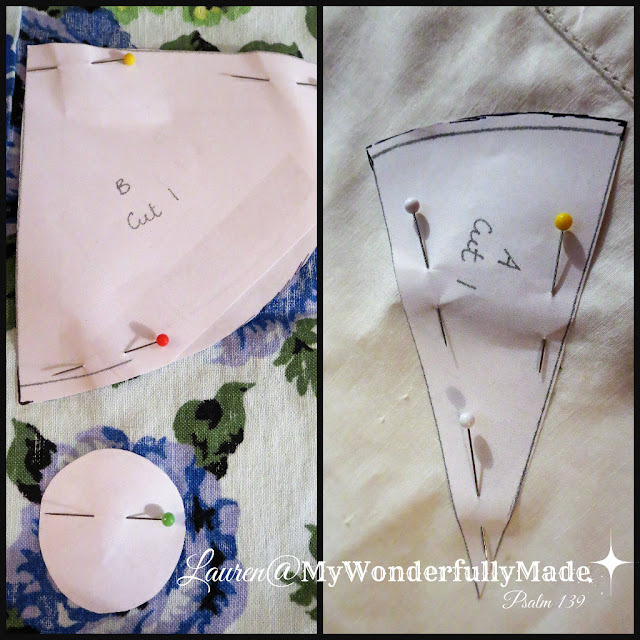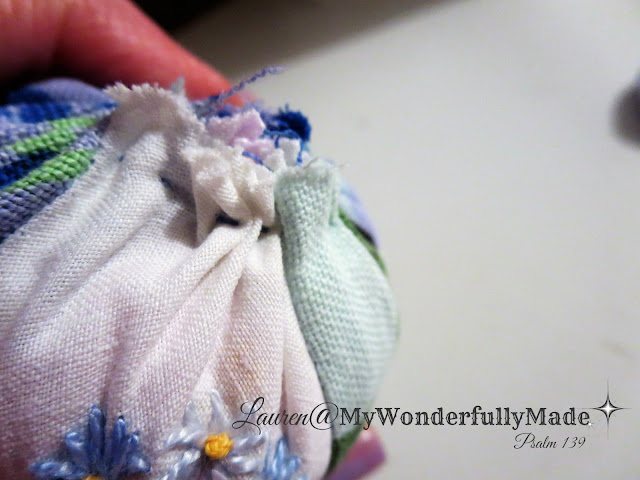I love vintage linens! Sometimes the prettiest ones have stains that just won't come out. Here's a great way to still get some life out of them . . . pin cushions. When I saw this little owl, I fell in love and knew it would be perfect for this fabric I have. The free pattern can be downloaded HERE.
Using the pattern provided, I cut out the pieces: The quarter circle is the body, the circle is the bottom and the triangle is the belly. I used vintage curtain material for the body and this pretty embroidered runner for the belly because it was too stained to use for anything else.
I made sure to center the embroidered flower bouquet so it would be centered on the owl's belly.
You need to cut a circle of cardboard and a circle of fabric (the fabric circle is cut 1/2" larger). With needle and thread, just gather and pull then stitch it so it stays gathered.
Stitch right sides together, the body and belly section. (See that I had already stitched it WRONG . . . and had to rip it out and stitch it again!)
This fabric was unraveling a lot so I used a zig zag stitch so it wouldn't unravel.
Here it is turned right side out.
I didn't have any fiberfill so I just used some soft, jersey fabric scraps to stuff it. Stitch along the bottom end and pull tight to hold in the filling.
Now stitch the fabric covered cardboard disk onto the bottom using a simple slip stitch all the way around.
The original instructions say to stitch the beak down. I'm lazy. I used a hot glue gun.
The directions also say to stitch the buttons on for the eyes. I stitched them with the thread then hot glued them on so they LOOKED like they had been stitched on.
Isn't he so cute??
He makes an adorable pin cushion. These would be cute for so many things! Now I know what to do with the linen stash. There are a lot of free patterns out there for pin cushions including these cute chicks which I think I'll try next!


























